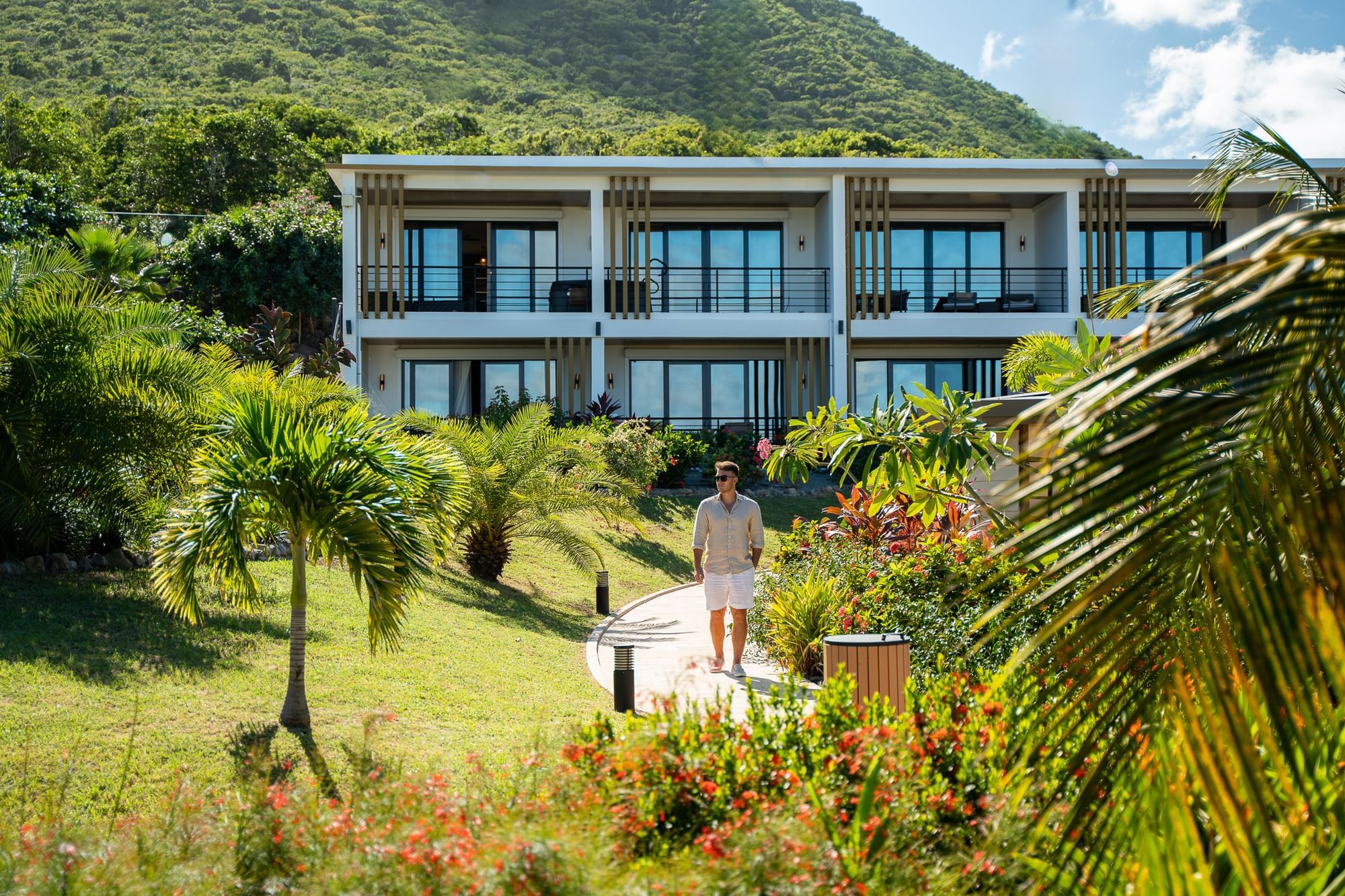
Press contacts for Golden Rock Dive and Nature Resort:
North America
Victoria King PR
vhk@vkpr.com | +1 310 207 5175
Europe
Bamboo Group
marloes@goldenrockresort.com | +31 651 530 818
natasha@goldenrockresort.com | +31 616 458 795
Golden Rock Resort has partnered with Tradewind Aviation to offer on-demand private charters from Puerto Rico, the U.S.V.I, and more directly into St Eustatius’ F.D. Roosevelt Airport.
Blue beads may draw you in, but it's the myriad dive sites that will keep you coming back.
From shipwrecks to unspoiled nature, travelers find treasures all around St. Eustatius.
St. Eustatius was named in 1493 by Christopher Columbus and over the following 150 years was claimed 22 times by different European nations until it finally settled as a Dutch territory. St. Eustatius comes from the French saint “Saint Eustace” who is the patron saint of merchants. In 1756, the port town of Oranjestad was claimed as a free port, making it the most important trading port for the West Indies Company and the entire Caribbean, earning the island the nickname “The Golden Rock”. In fact, up to 200 large merchant vessels could anchor in Oranje Bay at any one time. During the height of the merchant trade in the 17th and 18th centuries, thousands of ships would anchor in our bay and it is estimated there are over 400 shipwrecks. The wooden ships have long since rotted away, but what remains is a delight for divers. Mounds of ballast stones have fused together and formed the bedrock for coral gardens, and you’ll spot enormous anchors and canons encrusted with coral, shards of pottery and ancient rum bottles.
Another unique feature of Statia are our blue beads. During the slave trade, blue beads were used a form of currency and given as a reward. The story goes that the island of Manhattan was purchased from local Indigenous tribes with blue beads and trinkets, for the modern day equivalent of about $24! When the Dutch abolished slavery on Statia in 1821, the freed people cast their blue beads into the ocean. Today, lucky divers can still find blue beads laying on the seabed, or as we say, “you don’t find a blue bead; the bead finds you”. One of our 36 dive sites, “Blue Bead Hole”, is a popular site close to the harbor, composed of sand, rubble and small rocks, because of the possibility of finding this unique and treasured souvenir.
St. Eustatius has a special and celebrated relationship with the United States. It is said that munitions, mail and supplies to support the Revolutionary War effort passed through Statia on the way to the US. In 1776, the Dutch commander of St. Eustatius chose to recognise the right of independence for the newly formed American nation. Cannons were ceremoniously fired from Fort Oranje to salute the Andrew Doria merchant ship in a mark of respect to the visiting Americans, in a historic event that is now known as the “first salute.” To this day, the first salute is commemorated on 16th November as a national holiday called “Statia Day” to honor this special relationship, and dignitaries from all over the Caribbean and the world gather on Statia to celebrate this historic event.